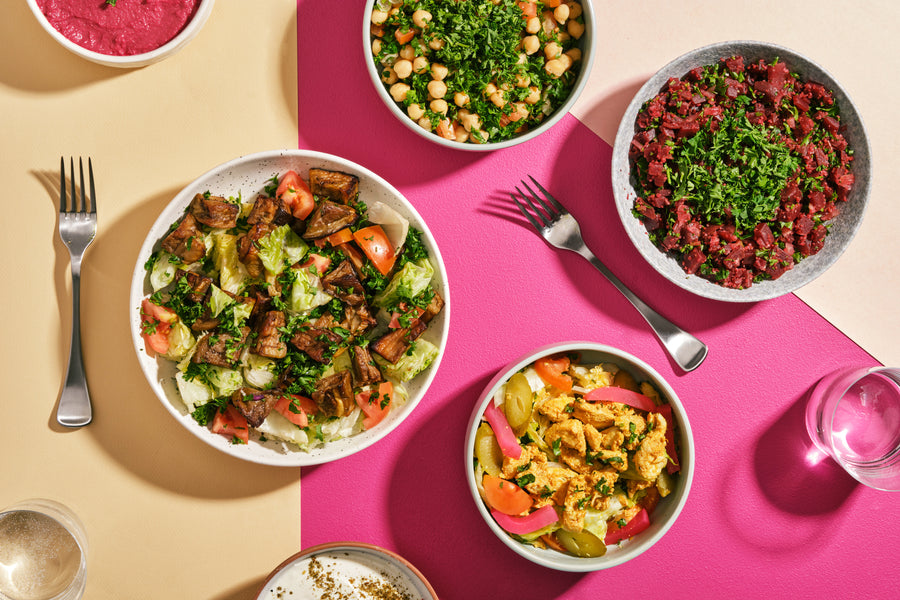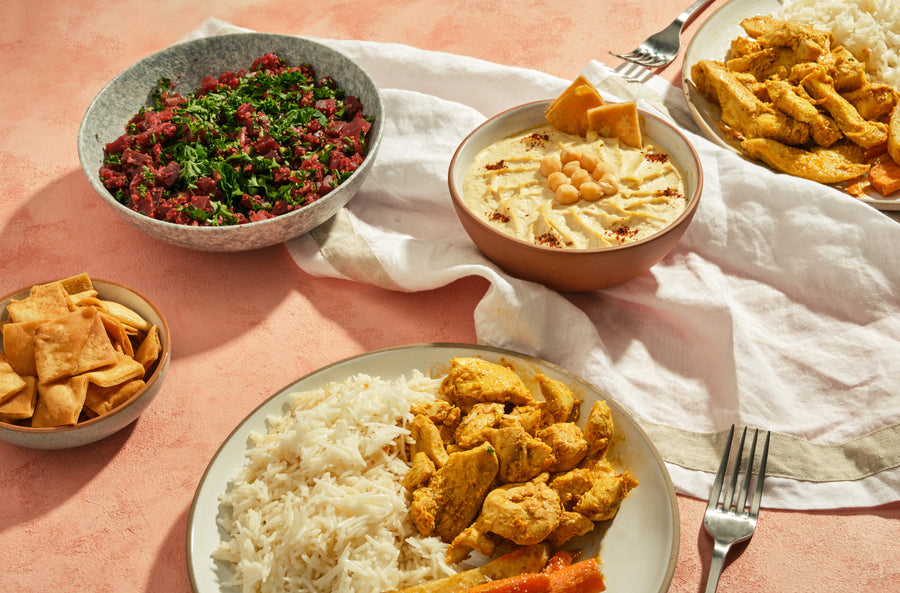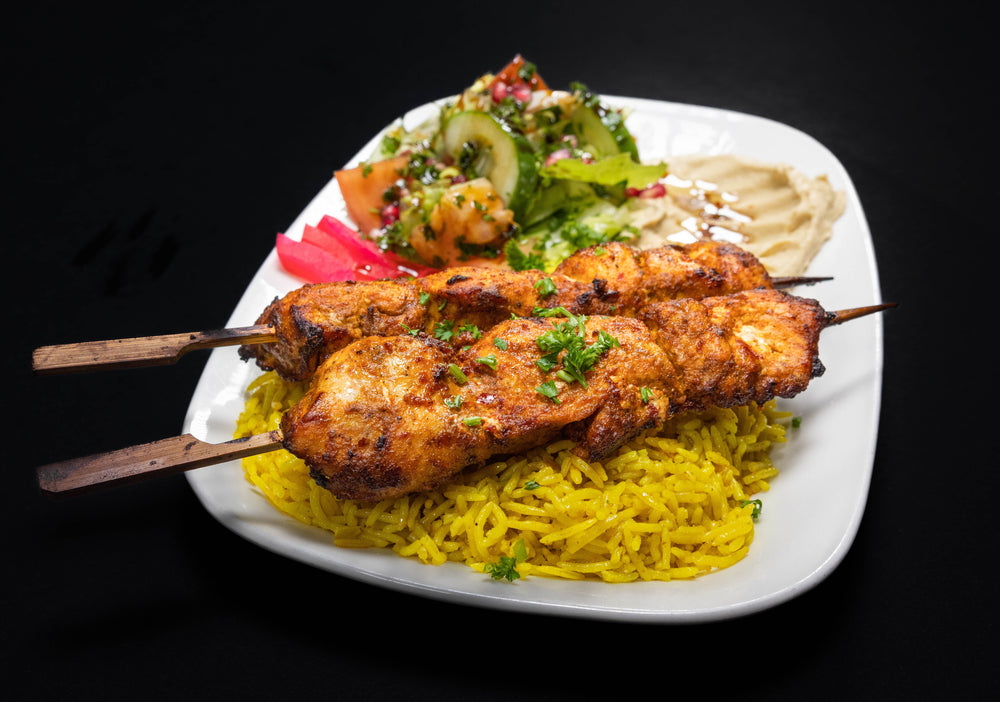All Regarding the Rich Flavors and Traditions of Syrian Food: A Culinary Journey
Syrian cuisine offers a distinct mix of flavors and customs that reflect its abundant cultural background. With staple components like olive oil and garlic, together with a variety of spices, the meals are both varied and welcoming. From the detailed preparation of kibbeh to the wonderful appeal of baklava, each facet of this cooking landscape reveals much deeper stories. As one checks out the essence of these tastes, a better understanding of common dining and party arises.
The Significance of Syrian Components
The significance of Syrian ingredients hinges on their abundant diversity and deep-rooted social importance. Influenced by the country's diverse geography and background, Syrian cuisine integrates a broad array of flavors, natural herbs, and fresh fruit and vegetables. Staples such as olive oil, garlic, and lemon give a structure, while spices like cumin, coriander, and sumac add depth and intricacy to dishes.The use fresh herbs, including parsley and mint, highlights the value of seasonal active ingredients. In addition, the region's fertile dirt yields a wealth of vegetables and fruits, such as tomatoes, pomegranates, and eggplants, which are essential to lots of recipes. Grains like bulgur and rice create the base of several meals, highlighting the importance of these active ingredients in Syrian culture. This blend of tastes mirrors not simply a cooking tradition yet also a tapestry of historic influences, making Syrian active ingredients vital to comprehending its food's lively character.

Iconic Dishes of Syrian Food
Syrian cuisine is renowned for its famous meals that display a rich tapestry of flavors and textures. Traditional meze plates use a selection of little meals that tantalize the taste, while hearty main dishes supply rewarding centerpieces for dishes (Afternoon Tea Vancouver). To finish the experience, an option of savory treats includes a wonderful note to the culinary journey
Standard Meze Plates

Hearty Main Courses
Passionate main dishes work as the focal point of Syrian eating, showcasing a blend of tastes that reflect the country's rich culinary traditions. Dishes such as kebab hindi, including seasoned lamb skewers, and the celebrated mujaddara, a soothing mix of lentils and rice, highlight making use of fresh components and aromatic spices. Another staple is the iconic kibbeh, made from bulgur wheat and minced meat, typically offered in various types, consisting of baked, fried, or raw. Furthermore, the tastes of the land come active in recipes like stuffed veggies, referred to as mahshi, which are full of rice, meat, and natural herbs. These main dishes not only satisfy appetite however additionally tell stories of family celebrations and cultural heritage.
Savory Desserts Option
A wonderful selection of treats defines the sweet side of Syrian food, offering an alluring end to any dish. Among the most popular confections are baklava, delicate layers of phyllo bread loaded with nuts and drenched in syrup, and maamoul, shortbread-like cookies often packed with days or nuts. Knafeh, a rich treat made from thin noodle-like pastry soaked in syrup and split with cheese, is a popular option, particularly throughout cheery occasions. In addition, the sweet and great smelling rice dessert, known as roz bil laban, supplies a comforting finish. These delectable treats not just display the region's culinary expertise yet likewise show the cultural heritage of Syria, making them cherished treats in both dining establishments and homes alike.
Conventional Food Preparation Strategies
Modern-day eases have actually affected many culinary techniques, typical food preparation strategies stay essential to Syrian food. These techniques usually stress making use of fresh, seasonal active ingredients and concentrate on sluggish food preparation to create rich flavors. Methods such as barbecuing, braising, and stewing prevail, permitting the all-natural tastes of the active ingredients to shine through.One notable technique is the preparation of kibbeh, a recipe made from finely ground meat and bulgur. It needs competent hand-rolling right into different shapes and can be baked, deep-fried, or served raw. Additionally, the art of making bread, particularly pita, is central to several dishes, frequently cooked in a standard stone oven.Preservation methods like pickling and fermenting also play a vital role, boosting the variety of flavors found in Syrian dishes. These techniques not only reflect the region's agricultural heritage but likewise cultivate a solid feeling of community through shared cooking practices.

The Role of Spices in Flavoring
Spices work as the heartbeat of Syrian food, infusing dishes with intricate tastes and aromatic deepness. Each flavor plays an essential function, adding not only to taste however also to the cultural heritage of the region. Typically used spices include sumac, cumin, and coriander, each supplying an unique profile that raises typical dishes. As an example, cumin provides heat and earthiness, while sumac includes a tangy brightness, improving the overall dish.Syrian chefs typically mix seasonings to create unified accounts, reflecting the complex balance of tastes that specify the food. Using spices is not just for spices; it additionally offers to maintain food and boost its dietary worth. This thoughtful incorporation highlights a deep understanding of the cooking arts, where flavors end up being essential writers, communicating the abundant background and diverse influences that characterize Syrian gastronomy. Ultimately, seasonings are indispensable in crafting memorable and authentic Syrian meals.
Congratulatory Dishes and Festive Custom-mades
Celebratory dishes in Syrian food are noted by conventional feast recipes that mirror the country's rich cooking heritage. Unique occasions typically entail special rituals that enhance the communal experience of eating. These personalizeds not only recognize the importance of the events yet likewise enhance cultural and domestic bonds.
Typical Feast Dishes
When households gather to celebrate considerable events in Syria, typical banquet recipes take spotlight, showcasing the rich cooking heritage of the area. These gatherings frequently feature lively platters of mezze, including hummus, baba ghanoush, and tabbouleh, which function as wonderful starters. The primary training course commonly highlights lamb or poultry, marinated and prepared to excellence, frequently come with by aromatic rice pilaf or bulgur. One of the most cherished dishes is maqlooba, a layered rice recipe with veggies and meat, turned upside-down prior to offering. Desserts also play a critical role, with baklava and knafeh supplying a sweet coating to the dish. Each recipe not only delights the taste buds however additionally mirrors the ingrained traditions and common spirit of Syrian culture.
Unique Celebration Routines
Special occasions in Syria are noted by rich routines that intertwine food and festivity, showing the social relevance of common celebrations. Commemorative dishes commonly consist of standard dishes such as kibbeh, tabbouleh, and different grilled meats, prepared with care and shared amongst friends and family. Throughout spiritual vacations like Eid al-Fitr and Eid al-Adha, families collaborated to prepare special sugary foods like maamoul, signifying unity and pleasure. Weddings are especially fancy, including multiple programs and vivid screens of friendliness. These events are not simply concerning food; they incorporate narration, songs, and dance, enhancing social bonds and cultural heritage. With these routines, Syrians commemorate life's turning points, making certain traditions are given through generations, enhancing their culinary landscape.
The Relevance of Sharing and Area
Sharing meals is a fundamental aspect of Syrian society, reflecting the deep-rooted worths of neighborhood and connection. In Syria, food is not simply nourishment however a method of bringing individuals together. Close friends and families collect around the table to appreciate traditional recipes, cultivating bonds and producing enduring memories. This communal dining experience emphasizes hospitality, where hosts most likely to excellent sizes to assure every guest feels welcomed and nourished.The act of sharing food likewise symbolizes generosity and solidarity, strengthening social ties within areas and bigger neighborhoods. Throughout gatherings, it is typical for people to serve each various other, showcasing a spirit of togetherness that goes beyond individualism. Celebrations, whether large or tiny, are often noted by the sharing of meals, where varied tastes and recipes come with each other, showing the abundant tapestry of Syrian society. Appropriately, the relevance of sharing and area in Syrian cuisine is not only a culinary practice yet an important social practice.
A Culinary Exploration of Syrian Sugary Foods
Although commonly outweighed by savory dishes, Syrian desserts hold a cherished location in the nation's culinary heritage. These confections mirror the region's abundant background, mixing tastes and strategies from various cultures. Traditional treats like baklava, with its layers of phyllo pastry, nuts, and honey syrup, display the creativity involved in Syrian food preparation. Ma'amoul, a shortbread-like cookie loaded with days or nuts, is often planned for cheery occasions, signifying friendliness and celebration.Another cherished wonderful is Knafeh, a bread taken in syrup and split with cheese or lotion, providing a wonderful comparison of textures. Syrians likewise enjoy a range of fruit syrups and maintains, frequently offered with tea or as part of a bigger spread throughout gatherings. These sugary foods not only please the palate however additionally work as a bridge in between generations, preserving the practices and stories of Syrian culture with each delectable bite
Often Asked Concerns
What Are the Health Perks of Typical Syrian Foods?
The health and wellness advantages of traditional Syrian foods include abundant nutrients from fresh veggies, legumes, and whole grains. These components promote heart wellness, enhance food digestion, and give necessary vitamins, contributing to total well-being and a balanced diet.
How Has Syrian Cuisine Evolved For Many Years?
Syrian food has actually advanced considerably, influenced by historical profession courses, cultural exchanges, and local availability of components. Typical meals have actually integrated modern tastes and methods while maintaining their abundant heritage, reflecting a varied culinary landscape.
Exist Vegetarian or Vegan Options in Syrian Food?
Syrian cuisine provides many vegan and vegan choices, including recipes like falafel, tabbouleh, and stuffed grape fallen leaves. These meals highlight the area's rich agricultural heritage, showcasing fresh veggies, grains, and aromatic seasonings in vibrant mixes.
What Beverages Pair Well With Syrian Recipes?
When taking into consideration drinks that enhance Syrian meals, one may locate that mint tea, ayran, and pomegranate juice boost the dish's tastes. Additionally, red wine frequently sets well with the flavors commonly found in these foods.
How Can I Recreate Syrian Meals in your home?
To recreate Syrian meals in your home, one must discover authentic dishes, gather typical components, and utilize cooking techniques unique to the cuisine. Explore seasonings and discussion additionally improves the overall dining experience. Syrian food is renowned for Brunch Kitsilano Vancouver BC its legendary dishes that showcase an abundant tapestry of tastes and structures. Flavors offer as the heartbeat of Syrian food, infusing recipes with complicated flavors and aromatic depth. Celebratory meals in Syrian cuisine are marked by conventional feast meals that show the country's rich culinary heritage. Events, whether little or huge, are usually marked by the sharing of meals, where diverse flavors and dishes come with each other, mirroring the abundant tapestry of Syrian society. Syrian food supplies various vegetarian and vegan alternatives, including recipes like falafel, tabbouleh, and stuffed grape leaves.